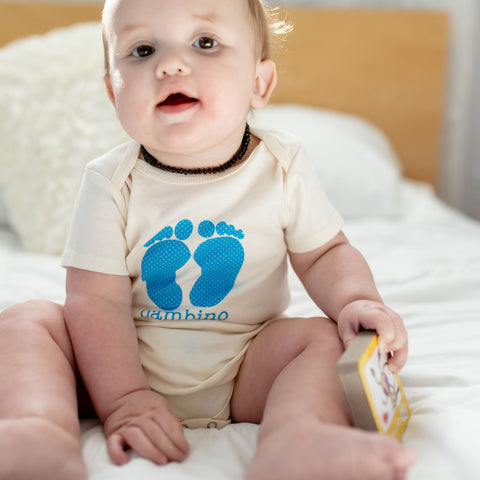When Blue Meant Girl and Pink Meant Boy...
Share
Norms change all the time: take the example of baby boy and baby girl clothing.
Now, pink is generally attributed to a baby girl, and blue is generally assigned to a baby boy. But, this baby clothing idea was not always the case.
Prior to the 1900’s, most babies wore white dresses due to the ability to bleach and the ease of changing.
But, ideas changed.
In a June 1918 article from the trade publication, Earnshaw's Infants' Department said, “The generally accepted rule is pink for the boys, and blue for the girls. The reason is that pink, being a more decided and stronger color, is more suitable for the boy, while blue, which is more delicate and dainty, is prettier for the girl,” according to Jo B Paoletti, a Historian from the University of Maryland and the author of Pink and Blue: Telling the Girls from the Boys in America. She was quoted in an article (April 7, 2011) in the Smithsonian, “When Did Girls Start Wearing Pink?”
In a Fast Company magazine article, How Pink and Blue Became Gender Specific, June 6, 2013, Mark Wilson noted, “In 1927, Time magazine printed a chart showing sex-appropriate colors for girls and boys according to leading U.S. stores. In Boston, Filene’s told parents to dress boys in pink. So did Best & Co. in New York City, Halle’s in Cleveland and Marshall Field in Chicago.”
And, in The Vintage Times article, “Pink Used to be a Boy’s Color and Blue for Girls” (May 1, 2019) Khadija Bilal wrote. “Strangely enough, in the wake of World War 2, the script was flipped and pink suddenly started being marketed and sold by fashion brands and retailers as the perfect color for women, while blue was suddenly manly and masculine.”
And, again, almost as quickly—“The women’s lib movement of the ’70s actually pushed retailers back to gender neutrality. But in the ’80s, the once lace-deprived girls became new moms, and the division of pink and blue started anew,” Wilson (Fast Company)
So, fashion can change on a dime—one person or a few people can decide to turn ideas around. And, this concept is true in many areas.
You can make a difference—you can challenge the accepted—for what is accepted today by most can be disrupted by an event or one person. This current pandemic has indeed challenged the accepted.
What will you change today?
P.S. For fun, I printed a blue bambino organic baby romper and a pink bambina organic baby romper in case you want this style, but you will notice our baby clothing is mostly unisex: gender-neutral, so you can go to the baby shower knowing you have the best shower gift—not even knowing the gender of the little human about to be born.
Check out our new organic cotton masks for adults and children (we have a limited supply)!



